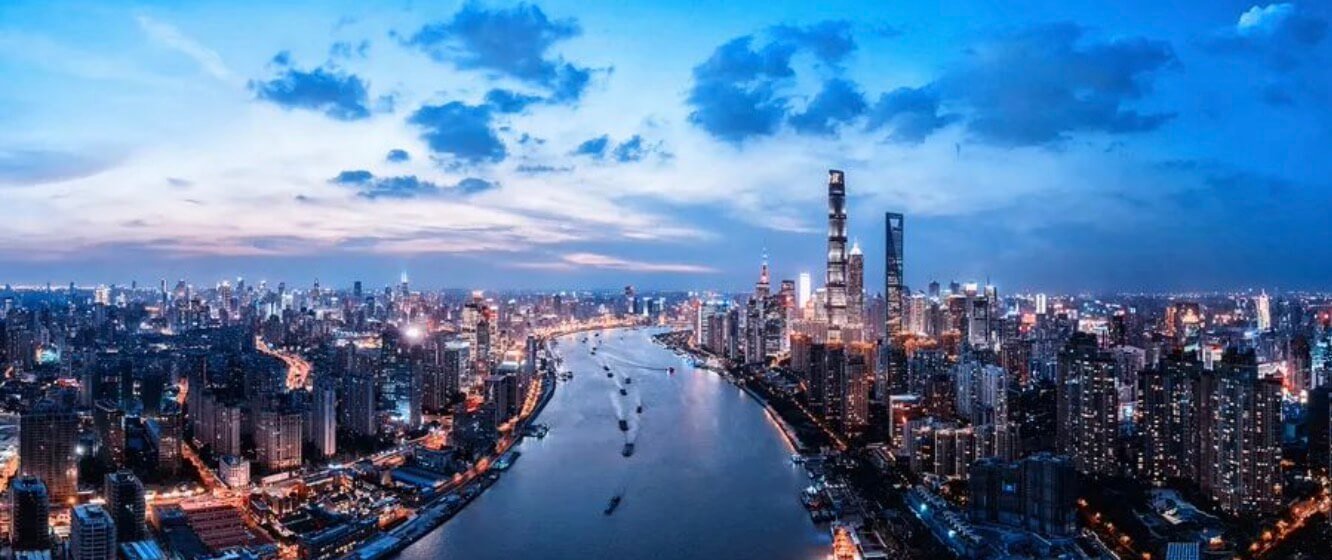On August 1, the newly revised Shanghai Environmental Protection Regulations came into effect. In the new regulations, “light pollution” control has become the focus. Casting light to disturb people will be fined up to 50,000 yuan.
What is “light pollution”?
In the lighting industry, the term “light pollution” is not new. It is a new source of environmental pollution after exhaust gas, wastewater, waste residue, and noise.

In daily life, common light pollution is mostly caused by the dizziness of pedestrians and drivers caused by the reflection of mirrored buildings, and the discomfort caused by unreasonable lighting at night.
It can harm the eyes, induce cancer, cause unfavorable emotions such as headache and anxiety, destroy the day and night work and rest of animals and plants and the ecological environment, etc. It also makes looking up at the starry sky an extravagant hope.
In the first case of “light pollution”, the refraction standard is difficult to implement
On September 1, 2004, Shanghai began to implement the first local standard to limit light pollution – the “Code for Decorative Lighting in Urban Environments”. At the end of September, Mr. Lu, who lives in Pudong New Area, sued a car sales company in court.
It turned out that the company built a new car showroom on the open space on the west side of the community where Mr. Lu lived. The three double-headed street lamps installed were only 20 meters away from Mr. Lu’s room, and the height of the light pole was just parallel to the balcony.
Every night, the strong light shines directly into the bedroom, illuminating the whole room as bright as day, making people unable to sleep at all, seriously affecting the life and work of Mr. Lu’s family.
However, due to the inability to prove the actual amount of economic losses caused by light pollution, the final result was that the car sales company only turned off the three street lights involved in the case, and the public apology and economic compensation of 1 yuan requested by Mr. Lu were not approved by the court.
This is the first light pollution lawsuit in China, and it also reflects that although the standards are in place, it is still difficult for citizens to complain about light pollution.
In the following 10 years, there are still problems such as lack of management and lack of systematization in the prevention and control of light pollution.
The ‘culprit’ of growing pollution
In recent years, the phenomenon of light pollution has increased unabated. According to Wei Rui, deputy director of the Shanghai Municipal People’s Congress City Construction and Environmental Protection Committee, from January to November 2021, the Shanghai Citizens Hotline received 3,341 light pollution complaints, an increase of 84% over the same period in 2017.

There are various reasons:
- A large number of materials such as glass curtain walls are used in modern buildings, and their light reflectivity is as high as 82% to 90%, even stronger than sunlight;
- The progress and integration of LED lighting and display technology, 3D façade projection, 3D naked eye, and digital technology have made lighting art more creative and expressive. When lighting is endowed with various cultural and experience connotations, it has become an important starting point to stimulate consumption and drive the night economy;
- To increase economic vitality, many cities have launched competitive lighting projects one after another. Cool light shows are often alienated as “face projects”, affecting the daily life of citizens.
Government supervision continues to strengthen, urban landscape lighting opens the second half
This time, Shanghai has upgraded and optimized the prevention and control of light pollution. The new version of the “Regulations” has made more clear requirements for road lighting, landscape lighting, outdoor advertising and signboards, and monitoring and supplementary light, and provides legal guarantees that can be implemented on the ground.
For example, as mentioned in the previous article, a maximum of 5,000 yuan to less than 50,000 yuan will be faced with a fine of 5,000 yuan to less than 50,000 yuan.
And behind this, what kind of inspiration and thinking does it bring us?
The landscape lighting and lighting market will enter the era of scientific and rational development from barbaric growth
“The brightness of lights at night in an area is proportional to its GDP.” The development of the nighttime economy is inseparable from lights.
In recent years, due to factors such as urbanization, large-scale events (such as the World Expo, G20 summit, the 70th anniversary of the founding of the People’s Republic of China), and the night economy, urban landscape lighting has developed rapidly. According to CSA Research, the domestic landscape lighting market has grown from 21 billion yuan in 2010 to about 110 billion yuan in 2019.
The successive listing of several landscape lighting-related companies such as Leyard, Minkave, Huaiti Technology, and HES also confirms the prosperity and development of the industry.
It is precisely because of this “overheating” that in December 2019, the government issued the “Notice on Remediation of “Performance Projects” and “Face Projects” such as the Excessive “Landscape Lighting Project”.
In addition to the impact of the epidemic, the landscape lighting market has been greatly impacted.
However, the demand for cultural tourism landscape lighting in characteristic towns, cultural and creative tourism, and nighttime lighting is still growing.
It is predicted that the market size of cultural tourism landscape lighting is expected to reach more than 140 billion yuan in 2025.

However, in this process, there have also been problems such as blind construction and excessive construction.
The lighting cases of boiling mountains and boiling water are numerous; blindly pursuing the gorgeousness and coolness of the light show, but ignoring the local environment, history, humanities, and other urban backgrounds, so that the priority is reversed.
If the phenomena such as over-brightness, excess, and homogenization remain unchanged, it will be detrimental to the development of the industry. The upgrade of Shanghai’s light pollution prevention and control measures shows that the government is paying more and more attention to this matter. This is good news.” Bella, the founder of EYBO lighting said so.
In the past two or three years, the government has taken a series of regulatory measures, and the landscape lighting market is gradually entering the second half: from savage growth to scientific and rational development, from “light up” to “beautiful” upgrade.
Higher requirements for lighting design level
Before due to the lack of accumulation of professional knowledge by many lighting designers, many urban night scene lighting, and cultural tourism night tour projects directly grafted cool stage lighting effects to the outdoors, the whole design was too bright, and the color was not well carried out. Control not only lacks the layering of light and shadow but also causes a large amount of light pollution.
In the process of upgrading from “light up” to “beautiful”, lighting designers are becoming more and more important.
For example, the Guanyuetai Buoyancy Park Demonstration Area Project won the IALD Lighting Award. According to Fang Fang, the project leader, this is a delicate building located on a hillside. It uses a large amount of transparent glass to form the curtain wall façade, which gives the whole building a light texture but also brings more challenges to the lighting design – not only to create a good lighting atmosphere in the interior but also to consider the lighting The overall perception and impact on the surrounding environment when it penetrates to the outside.

Therefore, when doing lighting design, the plan is very restrained. For example, the backlight groove on the side of the roof avoids direct outward aggressiveness; use weaker equipment to wash the outline of the parapet; to avoid the reflected glare of the outdoor pool, the light groove structure at the bottom of the pool is blocked, etc. These delicate techniques minimize the disturbance to the surrounding environment, allowing the light to blend perfectly with the night.
It can be seen that with the upgrade of “light pollution” prevention and control, the industry needs new lighting design standards, and also needs lighting designers to further improve cross-border skills and artistic accomplishment.
Respect laws and regulations and maintain enthusiasm for learning
The introduction of government policies often carries some ideal social goals and will have a substantial impact on the industrial structure.
Some effects are immediate and sudden. For example, various business qualifications, access thresholds, and the notice on landscape lighting and renovation mentioned in the previous article have suddenly cooled the industry as a whole and caught some companies that lacked awareness of risk prevention by surprise.
Some effects are indirect. For example, the strengthening of green lighting mentioned in the “Regulations” and the “Technical Standards for Near-Zero Energy Buildings” released a few years ago will enable those companies with better new technologies, new products, and solutions for energy conservation and environmental protection to have better multiple market competitive advantages.
Some government policies are reversible, such as the regulation or deregulation of something; some are irreversible, such as low-carbon and zero-carbon trends. As enterprises and designers, you should pay attention to the laws, regulations, and policy trends of the country, keep learning enthusiasm and practice them.


